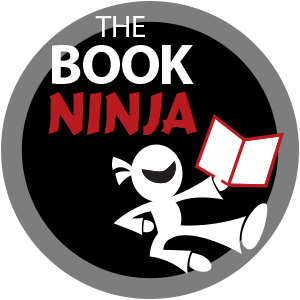Copyright pages don’t have to be confusing, but many authors get hung up on what exactly goes where on this obscure, yet important, page that typically appears on the back side of the title page of your book’s interior. While there is no absolute structure to what should appear where on your copyright page, there are some key essentials that should be included. Here are the most common elements to ensure you have on your copyright page, as well as a few bonuses:
Dedication (Optional): In the interest of saving space and page count, sometimes publishers will include a one- or two-line dedication at the top of the copyright page. This is especially useful for already thick books, children’s books or other full color books that can be expensive to print.
Disclaimers (Optional): If you’re writing a book with any health, legal, etc. advice, always include a disclaimer. A disclaimer can be as simple as:
This book is not intended to replace the services of trained [health/legal, etc.] professionals, or be a substitute for [health/legal, etc.] advice. You are advised to consult with your [health care professional/lawyer, etc.] with regard to matters relating to your [health/legal issues, etc.].
When in doubt, look at similar books in your genre and craft a disclaimer based off what they have written.
Copyright: Definitely one of the necessities of a copyright page, the copyright should appear as follows: “Copyright © YEAR by Author Name(s).” For example, any books I write and publish this year will state, “Copyright © 2013 by Kristen Joy.” (sans quotes) If you hired a professional cover designer, according to the Graphic Artist’s Guild Handbook of Pricing & Ethical Guidelines, cover designers retain copyright to the design they create. The same goes for illustrators who create any portion of the cover or illustrations for the interior. The copyright that appears for these artists would be the same as the author copyright, with the addition of the word “Cover Design” or “Illustrations” before “Copyright © by Name.”
All Rights Reserved Clause: Another necessity, the “All Rights Reserved” clause appears below the Copyright. There are several versions of this clause, from the simple words “All Rights Reserved” to a detailed explanation of those rights, and you can write one that meets your needs. Here’s what I put on my books:
All rights reserved. No part of this publication may be reproduced or transmitted in any form or by any means, including informational storage and retrieval systems, without permission in writing from the copyright holder, except for brief quotations in a review.
Another standard All Rights Reserved clause states:
All rights reserved. Except as permitted under the U.S. Copyright Act of 1976, no part of this publication may be reproduced, distributed, or transmitted in any form or by any means, or stored in a database or retrieval system, without the prior written permission of the publisher.
Again, reference books in your genre to create your own clause. You can then simply copy and paste it in each book or eBook you publish.
Publisher Info: Sometimes this information appears as a simple line with the publisher’s name above the copyright information, though more commonly it appears after the All Rights Reserved clause. The publisher info is a place where you put your publishing company name, address (or simply city and state), website and any other contact information you may want to share.
Permissions: If you quote any other published work, including books, newspaper articles, magazines, websites, etc., that information is copyrighted and you must obtain permission to reprint it in your book from the original author or publisher. They will usually require that you include a clause on your copyright page specifying the copyrighted material and where it appears in your book. Most permissions holders will give you the exact wording, so all you have to do is copy and paste it into your copyright page.
ISBN & LCCN: The International Standard Book Number (ISBN) should appear near the bottom of the copyright page, followed by the Library of Congress Control Number (LCCN, optional).
Printing Info: Somewhere else near the bottom of the book can appear “Printed in [Country] and the edition number. For example, some books say:
Printed in the United States of America
First printing April 2013
Keep in mind if you use POD (print on demand) technology, your book may be printed in facilities around the world from the same PDF file, so you won’t want to include where it is printed.
When in doubt, look at various copyright pages of other books in your genre and mimic yours to match. You’ll notice they’re all pretty standard. If you’re working with a publishing consultant or done-for-you service provider, they typically have copyright page information on file and will help you out with this part of the process so you don’t have to worry about getting it right.

